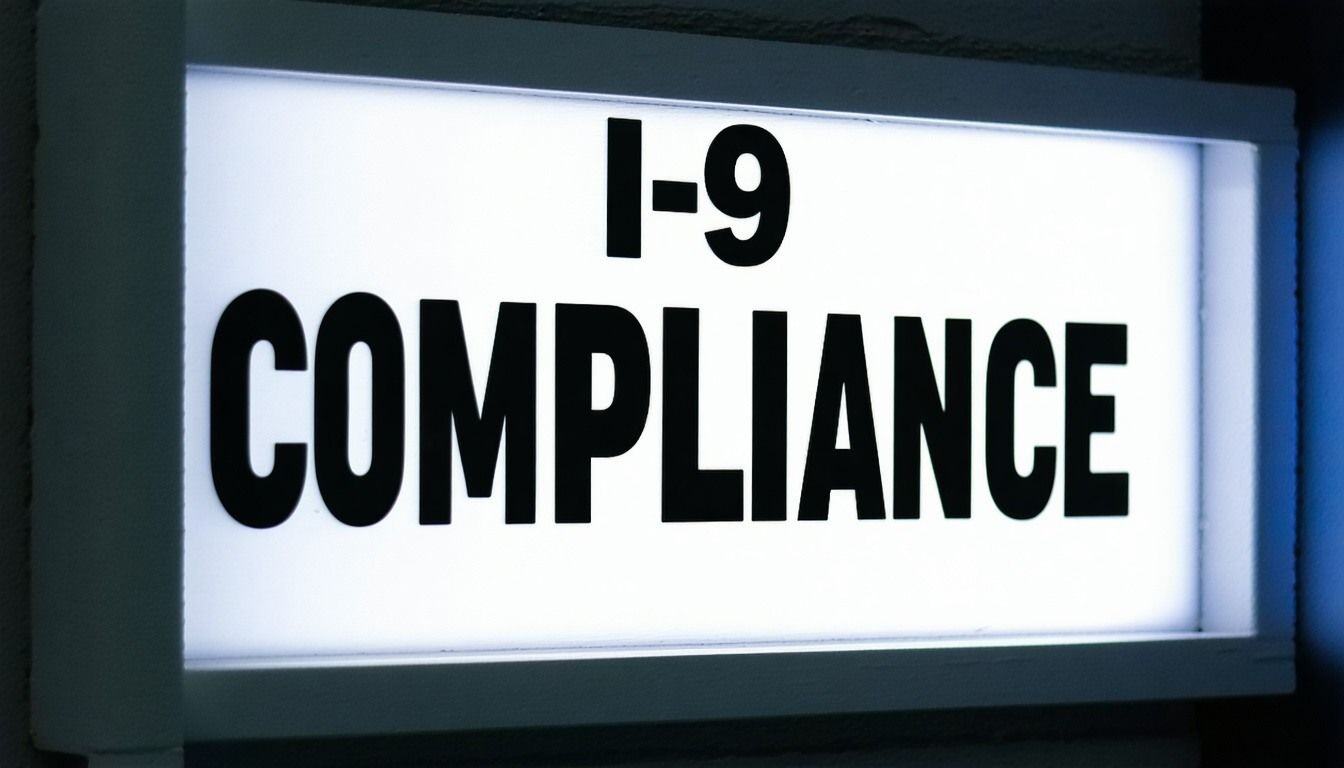W-2 Employee vs. 1099 Contractor: How to Classify Your Workforce Correctly
October 16th, 2025
6 min read

Hiring talent can be one of the biggest growth levers for your business—but classifying workers incorrectly as either W2 employees or 1099 contractors can lead to serious compliance and tax penalties.
At Lift HCM, we’ve helped hundreds of organizations across industries streamline their payroll processes and stay compliant with ever-changing labor policies.
This article breaks down everything you need to know about employee classification—from the latest IRS and Department of Labor rules to actionable tips for avoiding misclassification—so you can hire confidently and stay compliant.
Table of Contents
- Understanding Employee Classification: Why It Matters
- W2 Employees: Definition and Responsibilities
- 1099 Contractors: Flexibility with Boundaries
- W2 vs 1099: The Three Key Tests for Classification
- Worker Misclassification: Real Costs and Risks
- Understanding Illinois Employee Misclassification: Legal Risks, Penalties, and Compliance
- Key Legal Risks and Penalties for Misclassifying Workers
- Tax and Withholding Consequences
- Best Practices for Ensuring Compliance
- Tools and Technology for Simplified Classification
- Protect Your Business: Why Proper Classification Matters Now More Than Ever
Understanding Employee Classification: Why It Matters
Employee classification determines not only how you pay workers but also how you manage taxes, benefits, and compliance obligations. Misclassifying an employee as an independent contractor—or vice versa—can result in hefty IRS fines, back taxes, and reputational risk.
The difference between W2 employees and 1099 contractors isn’t just paperwork—it affects control, flexibility, and your company’s legal responsibilities. With more businesses embracing hybrid and freelance models, proper classification has become an essential part of HR strategy.
In 2025, the IRS and Department of Labor (DOL) have emphasized renewed enforcement around worker misclassification, meaning it’s more important than ever to understand the rules that apply to your workforce.
W2 Employees: Definition and Responsibilities
A W2 employee is a traditional employee on your company’s payroll. You withhold federal and state income taxes, pay employer payroll taxes, and often provide benefits like health insurance, PTO, and retirement plans.
Key characteristics include:
- The company controls how, when, and where the employee works.
- The employee uses company-provided tools or systems.
- The employee’s work is integral to the company’s core operations.
From a compliance standpoint, W2 arrangements are more administratively intensive but offer clearer oversight and reduced legal risk. W2 employees are typically more embedded in company culture, making this classification ideal for long-term growth and retention.
1099 Contractors: Flexibility with Boundaries
A 1099 contractor, also called an independent contractor, operates as a self-employed professional. They invoice your company for work performed but handle their own taxes, benefits, and business expenses.
Key characteristics include:
- Contractors decide how and when work gets completed.
- They may serve multiple clients simultaneously.
- They typically provide their own tools or equipment.
For employers, 1099s can offer agility and cost savings—especially for specialized or short-term projects. But those benefits come with less control and greater risk if the contractor’s classification doesn’t align with the IRS’s “behavioral, financial, and relationship” tests.
W2 vs 1099: The Three Key Tests for Classification
The IRS uses three primary tests to determine whether a worker is a W2 employee or a 1099 contractor:
- Behavioral Control – Do you direct how the work is done? Employees are typically subject to more control.
- Financial Control – Who invests in equipment and bears risk for profit or loss? Contractors usually manage their own finances.
- Relationship Type – Is the relationship ongoing, and are benefits provided? Employees often have continuing relationships and perks like insurance.
In 2025, federal and state agencies are increasingly aligned on these criteria, but some regions (like California and New York) apply stricter “ABC Tests” under state law. Always review both federal and state guidelines before classifying your workforce.
Worker Misclassification: Real Costs and Risks
Worker misclassification isn’t just an HR mistake—it’s a legal and financial threat. The IRS can impose up to 41.5% of a misclassified worker’s earnings in back taxes and penalties. The DOL can add wage claims and additional fines.
Common risks include:
- Owed back pay, overtime, and benefits
- Payroll tax adjustments and failure-to-file penalties
- Audit exposure and damaged employer branding
Misclassifying employees can be costly. On average, federal penalties and back wages range from $7,000 to $15,000 per misclassified worker. In cases where violations are willful or combined with state-level fines, total costs can exceed $100,000 per worker, especially in high-enforcement states like California and New York. Many states also impose civil penalties starting around $1,000 per worker, with additional daily or escalating fines for ongoing noncompliance (IDOL).
Understanding Illinois Employee Misclassification: Legal Risks, Penalties, and Compliance
Misclassifying employees as independent contractors in Illinois can expose your business to serious financial and legal consequences. From hefty fines to back pay liabilities and even potential criminal charges, the stakes are high. Understanding how Illinois defines and enforces employee classification laws is critical for maintaining compliance and avoiding costly mistakes.
Illinois employers must follow both federal IRS guidelines and the state’s own ABC Test for determining if a worker is a W2 employee or a 1099 contractor.
Illinois ABC Test Criteria (2025):
- The worker must be free from control or direction over performance, both contractually and in practice.
- The work performed must be outside the usual course of the company’s business or outside its business locations.
- The worker must be engaged in an independently established occupation, trade, or business.
If a worker fails any part of this ABC Test, Illinois considers them an employee—not an independent contractor. In the construction industry, this is strictly enforced with fines of up to $1,000 per violation (IDOL).
Example 1:
If a Chicago-based marketing agency hires a graphic designer as a 1099 contractor but directs their daily tasks and requires them to work onsite regularly, the designer is likely misclassified. Unless the designer independently runs a graphic design business, the agency must classify and treat them as a W2 employee.
Example 2:
A home repair company based in Springfield contracts with electricians for individual projects. If the electricians choose their own hours, supply their own tools, and market themselves to other clients outside the company, they typically qualify as independent contractors. However, if the repair company begins to schedule work, dictate processes, or restrict electricians from serving other clients, then they must be classified as W2 employees.
Key Legal Risks and Penalties for Misclassifying Workers
Illinois places the burden of proof on employers to show that any worker classified as an independent contractor meets all legal requirements. This means you must demonstrate that the individual:
-
Works free from your company’s control or direction
-
Performs services outside your primary business operations
-
Is engaged in an independently established trade or profession
If you can’t prove all three, the worker is likely considered an employee under Illinois law—triggering back pay obligations, unpaid benefits, and legal penalties.
Civil and Financial Penalties
Misclassification can lead to severe financial consequences. Under Illinois law:
-
Initial violations: $1,000 fine per misclassified worker
-
Repeat violations (within 5 years): $2,000 per misclassified worker
-
Willful misclassification: Double statutory penalties and possible punitive damages
-
Personal liability: Corporate officers can be held personally responsible for violations
Criminal Penalties
For intentional or repeated misclassification:
-
First offense: Class C misdemeanor
-
Subsequent offenses: Class 4 felony
-
Possible outcomes include personal liability for unpaid taxes and, in extreme cases, imprisonment.
These penalties demonstrate how seriously Illinois enforces worker classification laws—and why it’s essential to review contractor relationships carefully.
Tax and Withholding Consequences
Employee misclassification doesn’t just violate labor laws—it also creates major tax compliance issues.
When workers are misclassified as independent contractors, employers often fail to:
-
Withhold or remit federal and state payroll taxes
-
Issue W-2 forms (each missed form incurs a $50 penalty)
-
Pay employer contributions for FICA and unemployment taxes
Both the IRS and Illinois Department of Revenue may pursue repayment of all unpaid taxes, interest, and penalties. Employers may owe:
-
Up to 1.5% of unpaid wages
-
As much as 25% of unpaid taxes
-
100% of the missed FICA match
In short, misclassification can trigger financial exposure far beyond payroll errors—affecting every level of your organization’s tax compliance.
Best Practices for Ensuring Compliance
Building a compliant classification framework starts with internal clarity and documentation.
Best practices include:
- Perform regular audits of worker classifications and job descriptions.
- Document decision-making criteria (behavioral, financial, relational).
- Involve HR, finance, and legal in hiring processes for new roles.
- Leverage payroll software like Lift HCM to streamline tax reporting and flag potential misclassification patterns.
By investing in preventive controls, you can reduce audit risk, improve workforce planning, and build trust with employees and contractors alike.
Tools and Technology for Simplified Classification
Modern payroll and HCM software can automatically identify classification errors and prompt for compliance checks.
A strong platform should include:
- Integrated onboarding workflows with W2 vs 1099 templates.
- Real-time IRS and DOL regulation updates.
- Automated form filing (W2, W9, and 1099-NEC).
- Classification risk dashboards for HR leaders.
Implementing these systems helps HR and payroll teams stay proactive rather than reactive—especially when managing hybrid and multistate workforces.
Protect Your Business: Why Proper Classification Matters Now More Than Ever
At Lift HCM, we take the responsibility of worker classification seriously because it’s essential for protecting our clients from costly fines, tax issues, and reputational risk. Our team helps businesses navigate the complexities of federal, state, and Illinois-specific requirements so you can confidently classify W2 employees and 1099 contractors.
We follow industry best practices, conduct routine audits, and leverage advanced HCM solutions to minimize risks and keep your organization focused on growth. Lift HCM empowers organizations to reduce administrative burden while maintaining compliance confidence. Our platform combines payroll automation, tax accuracy, and classification insights tailored for businesses with diverse workforce models. Prevention is always more cost-effective than dealing with penalties as enforcement increases.
If you have questions or need help assessing your workforce, our payroll experts are here to guide you through every step—helping your business stay resilient and ready for long-term success.
Caitlin Kapolas is a results-driven professional with a strong background in account management and retail. She is dedicated to improving client experiences and building lasting relationships. Caitlin excels in identifying client needs, resolving issues, and implementing customized solutions that drive value. Her effective communication skills ensure high client satisfaction and loyalty, making her a trusted advisor and partner in meeting client needs with precision and professionalism.
Topics:














.jpg?width=3000&height=2000&name=digital%20onboarding%20image%20(1).jpg)


.jpeg?width=1024&height=1024&name=happy%20employees%20working%20together%20outside%20in%20the%20fall%20time(1).jpeg)



-1.jpg?width=1000&height=550&name=Businessman%20hand%20typing%20with%20cloud%20technology%20system%20and%20office%20symbol%20concept%20(1)-1.jpg)